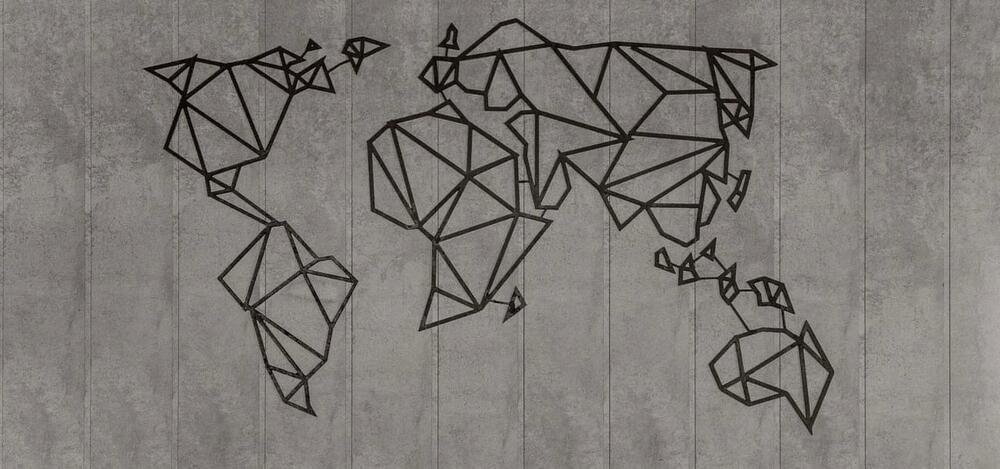The “Splinternet” is the idea that the open, globally connected Internet we all use splinters into a collection of fragmented networks controlled by governments or corporations.



Regardless of Pandemics, Wars, Supply chain shocks…the Planets digital brain capacity continues its near exponential growth.
When added to the 728 hyperscale datacentres that were in operation at the end of 2021 and factoring in [the] many new datacentre plans that will be announced over the next two to three years, we forecast that by the end of 2026 there will be an installed base of nearly 1,200 hyperscale datacentres around the world.
“Almost 40% of the world’s operational hyperscale datacentres are located in the US, and the bulk of the developments in the pipeline will also be US-based, with China and Ireland name-checked as the second and third countries with the most new builds planned.” The future looks bright for hyperscale operators, with double-digit annual growth in total revenues supported in large part by cloud revenues that will be growing in the 20–30% per year range,”
The number of hyperscale datacentre facilities in operation across the world is on course to hit the 1,200 mark by the end of 2026, according to forecast data shared by Synergy Research Group.
This prediction is based on the analyst house’s hyperscale market tracker service, which is designed to keep tabs on the activities of 19 cloud and internet service provider companies that meet its hyperscale definition criteria.
At the end of 2021, there was a total of 728 hyperscale facilities in operation around the world, its data shows. And – with a further 314 already in the pipeline – the installed base of large-scale server farms is on course to exceed the 1,000 mark in three years’ time, and will continue to grow rapidly in the years that follow.
When you’re building wearables and glowables, sometimes a flashy rainbow animation is all you need. [Geeky Faye] likes to go a little further, however, and built this impressive necklace that serves to inform on the local air quality.
The necklace consists of a series of Neopixel LED strips, housed within a tidy 3D printed housing made with flexible filament. A dovetail joint makes putting on and removing the necklace a cinch. A TinyPico V2, based on the ESP32, runs the show, as it’s very small and thus perfect for the wearable application. A USB power bank provides power to the microcontroller and LEDs.
The TinyPico uses its WiFi connection to query a server fed with air quality data from a separate sensor unit. The necklace displays a calm breathing animation as standard in cool tones. However, when air quality deteriorates, it shows warmer and hotter colors in a more pointed and vibrant fashion.

Your appliances, car and home are designed to make your life easier and automate tasks you perform daily: switch lights on and off when you enter and exit a room, remind you that your tomatoes are about to go bad, personalize the temperature of the house depending on the weather and preferences of each person in the household.
To do their magic, they need the internet to reach out for help and correlate data. Without internet access, your smart thermostat can collect data about you, but it doesn’t know what the weather forecast is, and it isn’t powerful enough to process all of the information to decide what to do.
But it’s not just the things in your home that are communicating over the internet. Workplaces, malls and cities are also becoming smarter, and the smart devices in those places have similar requirements. In fact, the Internet of Things (IoT) is already widely used in transport and logistics, agriculture and farming, and industry automation. There were around 22 billion internet-connected devices in use around the world in 2018, and the number is projected to grow to over 50 billion by 2030.


Russia is forcing Google to delist URLs associated with virtual private networks, or VPNs, but almost half a million Russians are downloading the technology that allows them to obscure their internet usage and access government-blocked websites.
Clearly, Russians are looking for uncensored information about their government’s war against Ukraine.
“Surfshark conducted an analysis showing that the Russian telecoms regulator (Roskomnadzor) has forced Google to delist more than 36,000 URLs that link to VPN services over the past month,” a Surfshark representative told me via email. (The company offers a VPN product.) “The most significant spike of requests was recorded amid the second week of the war, when the Kremlin banned various media platforms, including Facebook, Twitter, YouTube, while others left due to a ‘fake news’ law.”


If we are to set up a permanent base on the Moon, we will need some solid connection.
A space startup company is trying to make that happen. Aquarian Space recently announced receiving $650,000 in seed funding to develop a possible broadband internet connection that would link the Earth to the Moon, and maybe even Mars.
The company aims to deploy its first communications system to the Moon by 2024 in anticipation of increased demand from planned space missions to the Moon and beyond, both public and private ventures.
“In 2021 there were 13 landers, orbiters, and rovers on and around the moon,” Kelly Larson, CEO of Aquarian Space, said in a statement released Thursday. “By 2030, we will have around 200, creating a multibillion-dollar lunar economy. But this can’t happen without solid, reliable Earth-to-moon communications.”

